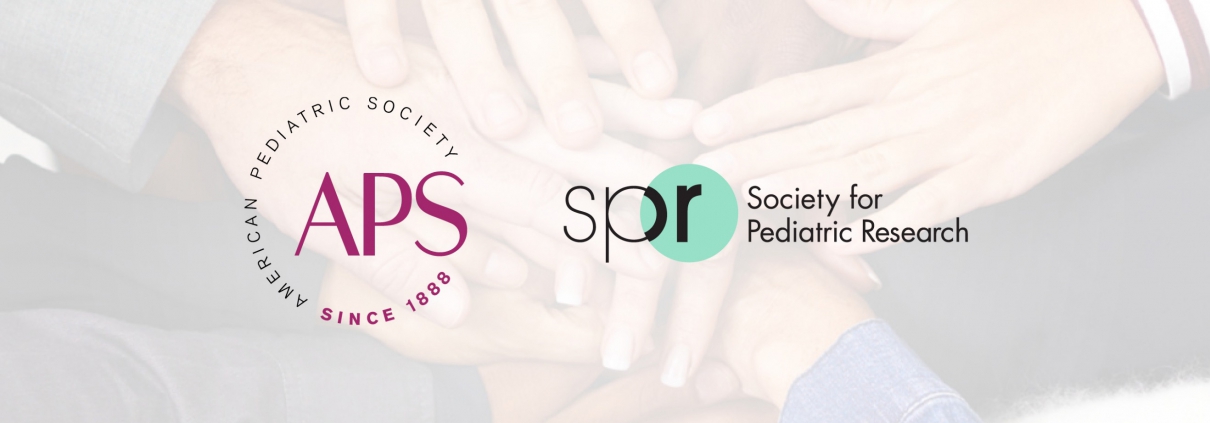Pediatric Policy Council Update
The APS and SPR are members of the Pediatric Policy Council (PPC) which actively advocates for children and academic pediatrics at the federal level. APS representatives to the PPC are Drs. DeWayne Pursley and Jonathan M. Davis; Drs. Joyce Javier and Shetal Shah represent the SPR.
The PPC also includes representatives from the Academic Pediatric Association (APA) and the Association of Medical School Pediatric Department Chairs (AMSPDC). The PPC is based in the Washington DC office of the American Academy of Pediatrics (AAP), who supplies staff and other support.
The latest advocacy developments are summarized by the PPC below
PPC CAPITOL CONNECTION
September 9, 2020
What Matters Now in Washington:
- Scott Denne and Dr. Barbara Stoll authored an op-ed in the Houston Chronicle on the importance of science in school reopening. More…
- Academic pediatricians prepare for the 2020 election and Census. More…
- Congressional negotiations on additional COVID relief have stalled as two sides remain “miles apart.” More…
- The PPC called on the Senate to fund the Pediatric Subspecialty Loan Repayment Program in FY 2021. More…
- The federal government is allowing pharmacists to administer childhood vaccinations in a seriously misguided move. More…
- The impact of the COVID-19 pandemic on children and families is growing, with marginalized communities facing the most significant challenges. More…
- A federal court stops federal government from winding down Census operations as concerns about the 2020 count’s accuracy mount. More…
Academic Pediatric Leaders Emphasize Importance of Science for Getting Kids Back to School. Current PPC Chair Scott Denne, MD, and former American Pediatric Society President Barbara Stoll, MD, called for a return to science-based decision-making as communities across the country debate how children can safely return to school. In an op-ed titled “Want to get kids back in the classroom? Trust science and scientists,” Drs. Denne and Stoll emphasized the need to trust in scientific expertise as segments of the American public seem increasingly skeptical of rapidly changing COVID-19 public health recommendations. The article ran in the Houston Chronicle on August 25 and comes as academic pediatricians have spoken out against public attacks on Dr. Anthony Fauci and science broadly.
PPC Groups Prepare for 2020 Election, Census Mobilization. As November 3 nears, academic pediatricians are preparing to get out the vote. Pediatric researchers have an important role to play in ensuring children have a voice this election and are counted in the 2020 Census. The Rx to Vote, available in English and Spanish, allows academic pediatricians to share actionable information with patients and families about registering to vote and the importance of completing the 2020 Census. The tool includes a customized QR code and text short code to allow patients and families to quickly and easily access voter registration information online or by text.
The Society for Pediatric Research has also launched a new webinar: What Pediatricians, Pediatric Researchers, and Scientists Need to Know About US National Child Health Policy in 2020. The webinar discusses the impact of pending legislation, administrative rules, and executive orders on all forms of scientific research, social determinants of health, and the clinical practice of modern pediatrics. Topics covered include Medicaid, health equity, gun violence prevention, and environmental health. Learn more about how to view the webinar and earn CME credit online.
Few Signs of Progress as COVID Relief Negotiations Remain Stalled. Lawmakers left Washington in early August as bipartisan negotiations between congressional Democrats and the White House failed to yield results. A month later, little has changed. Despite the expiration of key pandemic relief benefits, including enhanced federal unemployment insurance payments, there is little consensus on the scope or size of a legislative package, with House Speaker Nancy Pelosi (D-Calif.) describing the two sides as “miles apart.” Even a late August convening of the House, which was called back to Washington to address concerns about operational changes at the United States Postal Service (USPS) and its implications for the election, did not address any COVID-related policy alongside a bill bolstering funding for USPS.
Democrats remain committed to an expansive relief package along the lines of the $3.5 trillion House-passed HEROES Act, which would provide hundreds of billions of dollars in funding for state and local governments, public schools, direct relief to Americans, and additional health care priorities. Republicans have proposed a roughly $1 trillion package with significantly less funding for state and local governments in particular. When negotiations first broke down, some anticipated the negotiations could drag into September, but it is now possible it will take into October to secure a deal.
—Limited Time, Competing Priorities Complicate the Path Forward for Congressional Action. With just weeks to go until government funding runs dry and less than two months until the presidential election, Congress will have to juggle a complicated set of demands as it returns this month. The approaching end of the fiscal year on September 30 means that Congress will have to act to fund the government for the coming year or face a government shutdown just weeks before voters head to the polls. Congressional Democrats and White House negotiators appear to have reached an agreement to temporarily fund the government at current year funding levels, a common election year tactic that kicks thorny spending questions past the election. However, the agreement appears to separate out government funding from any COVID relief legislation, removing a must-pass deadline from that process and potentially slowing broader government action to ease the harms inflicted by the pandemic further.
In recent weeks, Republicans have floated the idea of a so-called “skinny” package of COVID relief measures, which would be narrowly targeted to direct assistance like a more modest enhanced unemployment benefit and money for the Paycheck Protection Program. Democrats have panned this approach as inadequate to meet the moment. However, Speaker Nancy Pelosi has reportedly offered multiple times to come down $1 trillion from her earlier proposal if Republicans are willing to come up by the same amount, essentially meeting in the middle. Though progress remains limited, there is hope that some of these offers are signs that both sides are willing to strike a deal, even if it is a ways off.
PPC Calls on Senate to Fund Pediatric Subspecialty Loan Repayment in FY21. The PPC joined more than 50 medical and patient advocacy organizations to urge the Senate to fund the Pediatric Subspecialty Loan Repayment Program (PSLRP) in Fiscal Year (FY) 2021. The late August letter to Senate appropriators highlighted the five-year reauthorization of the program included in the CARES Act as evidence of Congress’s intent to bolster the medical workforce in the face of the COVID-19 pandemic and urged funding to address the critical need. While the House of Representatives did not include PSLRP funding in its Health and Human Services spending bill, there is an opportunity for the Senate to push for this funding in a final negotiated appropriations package. However, the Senate has not passed any of its spending bills for the upcoming fiscal year to date. The PPC has long supported the extension and funding of PSLRP.
In Concerning Move, HHS Allows Pharmacists to Administer Childhood Vaccinations. In late August, the U.S. Department of Health and Human Services (HHS) announced that it would authorize any state-licensed pharmacist to administer childhood vaccines. The move, which supersedes state laws that typically limit which immunizations pharmacists can provide, was framed as an opportunity to ensure children do not fall behind on childhood vaccines. While pediatricians have been increasingly alarmed over the course of the pandemic about falling childhood vaccination rates, the dramatic move was immediately denounced by the AAP as “incredibly misguided,” and the Academy called on the federal government to support the pediatric medical home as the optimal place for children to get the care they need, including routine vaccinations.
As Pandemic Drags on, Impact on Children and Families Becomes Increasingly Evident. Despite a contentious public debate over school reopening, the U.S. has barreled into a new school year with little consensus on the best way to approach learning in the COVID-19 era. The result: a patchwork of continually evolving local decisions impacting millions of families nationwide. Parents are now bracing for months more of remote learning with little support after serious challenges with virtual learning in the spring. Indeed, a New York Times survey found that just one in seven parents said their children would be returning to school full time in the fall.
The challenges of remote learning, which requires a broadband internet connection and often hands-on assistance from parents, is amplified for communities of color, low-income families, and others. As school goes online for millions of students, those who lack a highspeed internet connection or other necessary equipment are missing out entirely. In many communities, however, the risk of exposure to the novel coronavirus from in-person learning is just as serious, exacerbated by the major health inequities laid bare by the pandemic—even for children of color. For instance, the increased likelihood that children of color live in multigenerational households or have parents who are essential workers may facilitate further spread of the virus, particularly to those more vulnerable. The result is likely to leave underserved communities further behind. Recognizing these challenges, the AAP’s latest school reopening guidance called for additional federal assistance to schools to make the necessary modifications to reopen safely or to facilitate improved remote learning. In the meantime, families around the country will have to wait for Congress to act to provide the resources schools need.
Court Orders Federal Government to Continue Census as Abbreviated Timeline Continues to Raise Concerns About Accuracy of Count. A federal judge ordered the Trump administration not to wind down Census operations until further notice, pending an additional hearing on the matter later this month. The move comes in response to litigation brought by civil rights organizations over concerns about the implications of a decision to cut Census enumeration activities short by a month and the implications of that decision for the accuracy of the count.
In recent months, a growing number of experts have been sounding the alarm about the federal government’s decision to cut the 2020 Census short rather than request a 120-day extension from Congress as initially proposed. As a result, in-person enumeration activities delayed by the pandemic may now end a month earlier than initially proposed in late September and key data analysis and validation activities will also be shortened. Sesame Workshop CEO Jeffrey Dunn and AAP CEO Mark Del Monte, JD, emphasized the importance of counting all children in the 2020 Census and opposing efforts to cut it short early in a September 8 op-ed.
Documents released by the House Committee on Oversight and Reform suggest that the Census Bureau is aware that the truncated timeline risks reducing the accuracy of the final count. In the meantime, those who count on an accurate Census, including mayors of cities nationwide, are staring down serious threats to federal funding, political representation, and key demographic data.

